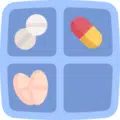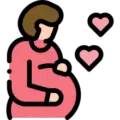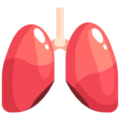Author(s)
Lucas G. Hill, PharmD, BCPS, BCACP
Reviewed By
Kashelle Lockman, PharmD, MA
From 2000–2010, opioid overdose was the fastest growing cause of death in the United States.1 In 2014, opioids were implicated in 61% of all drug overdose deaths, killing 28,647 Americans.2 Forty states have passed legislation recognizing pharmacists as front-line providers for overdose prevention by allowing standing orders for naloxone.3 Unfortunately, many pharmacists are not well prepared to fully participate in opioid harm reduction efforts due to a lack of training. Moreover, there remains persistent bias against persons with substance use disorder, even among health professionals.4
The landscape for pain treatment in the United States changed in 1999 when The Joint Commission standards were updated to encourage pain assessment as the “Fifth Vital Sign.” Over the following decade, both opioid prescribing and opioid overdose deaths quadrupled.5 Drug overdose surpassed motor vehicle crashes as the leading cause of death due to injury in 2009 and continues to rise.6 In recent years several thoughtful steps to prevent opioid misuse have been implemented including the development of tamper-resistant opioid formulations and prescription drug monitoring programs. These supply-side interventions appear to have had a modest effect, with overdose deaths from prescription opioids stabilizing from 2009–2013. However, the overall public health impact of these policies remains dubious — overdose deaths from heroin skyrocketed almost three-fold in that same timeframe.7
Harm reduction organizations have been working for decades to expand access to naloxone, a highly effective antidote to reverse acute opioid overdose. From 1996–2010, these programs distributed naloxone to over 53,000 individuals and reported to have saved more than 10,000 lives.8 Despite these impressive data, prescribers and pharmacists haven’t taken an active role in increasing naloxone prescribing and dispensing to persons at risk for opioid overdose. A recent survey of primary care providers found that 33% recalled receiving education about the use of take-home naloxone and 92% have never prescribed it.9
In a retrospective cohort study, funded by the National Institute for Drug Abuse, Phillip Coffin and his colleagues evaluated the impact of coprescribing naloxone to patients prescribed opioids for chronic pain.10 Data were analyzed from six primary care clinics that had implemented robust naloxone coprescribing programs in San Francisco, California. These programs included provider education regarding overdose risk groups, patient communication strategies, and various naloxone formulations. Notably, long-term use of opioids at any dose was explicitly included as an indication for naloxone. The rate of opioid-related emergency department (ED) visits and the dose of prescribed opioids were compared between patients who did and did not receive naloxone prescriptions.
A total of 1,985 patients prescribed an opioid chronically for pain — defined as enough opioid to take one dose daily for at least three months — were included in the analysis. The study population was well-balanced by sex (58.26% male) and remarkably diverse (48.4% black, 30.5% white, 13.4% Hispanic, and 7.8% other). The majority of patients were prescribed a daily dose of opioid less than 60mg (54.3%) based on the estimated morphine equivalent dose in milligrams (MEQ). Subjects prescribed naloxone (38.2%) were more likely to have been prescribed 60mg MEQ or greater (57.4% vs 38.3%) and to have experienced an opioid-related ED visit in the past year (9.0% vs 4.8%) than patients who were not prescribed naloxone.
During the study period, subjects experienced 471 opioid-related ED visits, 95 of which were due to excessive sedation. Based on regression modeling, the authors report that naloxone recipients experienced 47% fewer opioid-related ED visits per month in the six months after receiving a prescription (incidence rate ratio [IRR] 0.53 [95% CI 0.34-0.83], p=0.005) and 63% fewer visits after one year (IRR 0.37 [95% CI 0.22-0.64], p<0.001) than subjects who did not receive naloxone. No difference in the change in the prescribed opioid dose was noted between the two groups (IRR 1.03 [95% CI 0.91-1.27], p=0.61). No adverse events related to naloxone prescribing or administration were reported.
The authors attempted to analyze a number of other variables, including specifics about which providers were most likely to prescribe naloxone and which patients were most likely to receive a prescription. They also tried to account for the effect of time after receiving a naloxone prescription on the risk for an opioid-related ED visit. However, given the relatively small sample and retrospective design, the results of these analyses are not likely to be generalizable. The authors conclude that it is feasible to implement a naloxone coprescribing program in primary care, and that these programs may reduce the risk of opioid-related ED visits. They admit it is reasonable for providers to prioritize naloxone prescribing for patients with clearly established risk factors for overdose.
This is a landmark study for opioid safety and overdose prevention efforts because previous research reported only descriptive data. Despite a programmatic effort to educate clinicians about naloxone, it is notable that only 38.2% of subjects in this study received a naloxone prescription. A very significant resource investment was required to achieve this result. It is possible that implementing automated naloxone coprescribing through the EHR may lead to far more patients receiving naloxone and an even greater impact on ED visits.
As a retrospective analysis, this study suffers from several limitations including an inability to clearly establish a causal relationship between the intervention and outcomes. This analysis relied on coding of ED visits, which can be inaccurate. The raw opioid-related ED visits data without modeling were not provided for the two groups, so pre- and post-implementation data cannot be compared.
This study bolsters the common sense argument that naloxone should be prescribed to every patient who is at significant risk for an opioid overdose. A recently published report provides an exhaustive analysis regarding risk factors for opioid overdose.11 Unfortunately, there is still widespread disagreement about the threshold at which the risk of overdose merits naloxone coprescribing. Clearly it is difficult it is to integrate a complex prescribing rule in clinical practice. Recognizing this barrier, ambulatory care pharmacists should collaborate with other providers to establish very broad inclusion criteria with a low threshold for naloxone prescribing.
Some providers are hesitant to coprescribe nalaxone due to fear it will alienate patients. But the results of surveys assessing patient perceptions have found that most patients respond positively when offered naloxone and nearly all believed coprescribing naloxone should be a routine practice.12 These data are consistent with my experience leading a similar project. When naloxone is offered with compassion and appropriate patient education, resistance or anger are extremely rare. Instead, a more open dialog is fostered.
As ambulatory care providers, we are responsible for ensuring evidence-based treatments are implemented. If a patient presented to your clinic after experiencing a myocardial infarction, you wouldn’t let them leave without a statin. The next time you see a patient who chronically takes opioids or who has a history of opioid use disorder, don’t let them leave without naloxone. Are you prepared to recommend, prescribe, and dispense naloxone to high-risk patients?
Check out iForumRx Opioid Safety and Overdose Prevention Resource Page.
- Mack KA. Prescription drug overdose prevention at CDC. PDMP Assist. Accessed 11/5/16.
- Rudd RA, Aleshire N, Zibbell JE, Gladden RM. Increases in drug and opioid overdose deaths–United States, 2000-2014. MMWR 2016;64(50):1378-82.
- Naloxone overdose prevention laws. Prescription Drug Abuse Policy System. Accessed 11/5/16.
- van Boekel LC, Brouwers EPM, van Weeghel J, Garretsen HFL. Stigma among health professionals towards patients with substance use disorders and its consequences for healthcare delivery: systematic review. Drug Alcohol Depend 2013;131(1-2):23-35.
- Paulozzi LJ, Jones CM, Mack KA, Rudd RA. Vital signs: overdoses of prescription opioid pain relievers–United States, 1999-2008. MMWR 2011;60(43):1487-92.
- Addressing Prescription Drug Abuse in the United States. Department of Health and Human Services, Center of Disease Control and Prevention Website. Accessed 10/1/16.
- Hedegaard H, Chen LH, Warner M. Drug-poisoning deaths involving heroin: United States, 2000–2013. NCHS data brief, no 190. Hyattsville, MD: National Center for Health Statistics. 2015.
- Wheeler E, Jones TS, Gilbert MK, Davidson PJ. Opioid Overdose Prevention Programs Providing Naloxone to Laypersons – United States, 2014. MMWR 2015;64(23):631-5.
- Binswanger IA, Koester S, Mueller SR, et al. Overdose education and naloxone for patients prescribed opioids in primary care: a qualitative study of primary care staff. J Gen Intern Med 2015;30:1837-44.
- Coffin PO, Behar E, Rowe C, et al. Nonrandomized intervention study of naloxone coprescription for primary care patients receiving long-term opioid therapy for pain. Ann Intern Med 2016;165:245-52.
- Lim JK, Bratberg JP, Davis CS, Green TC, Walley AY. Prescribe to prevent: overdose prevention and naloxone rescue kits for prescribers and pharmacists. J Addict Med 2016;10:300-8.
- Behar E, Rowe C, Santos GM, Murphy S, Coffin PO. Primary care patient experience with naloxone prescription. Ann Fam Med 2016;14:431-6.






 iForumRx.org is a web-based community of practice designed to inform ambulatory care pharmacy specialists, pharmacy residents, and student pharmacists about high-quality, practice-changing evidence.
iForumRx.org is a web-based community of practice designed to inform ambulatory care pharmacy specialists, pharmacy residents, and student pharmacists about high-quality, practice-changing evidence.